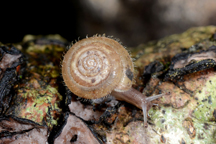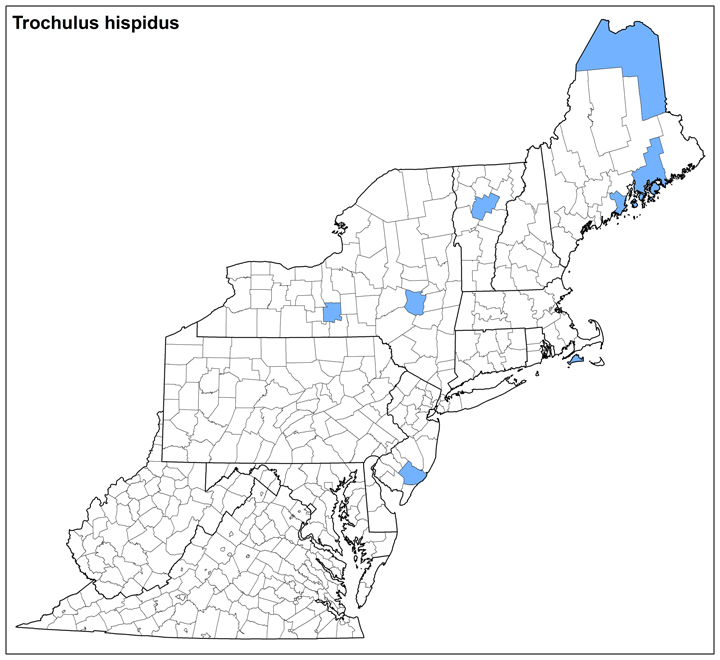Land Snails

Photo: Trochulus hispidus. Image © Roy Anderson
Click photo to enlarge.
Trochulus hispidus (Linnaeus, 1758) (non-native)
Family: Hygromiidae
Common name: Hairy Helicellid Snail
Identification
Width: 5-12 mm
Height: 5-6 mm
Whorls: 6-7
This snail varies in shape and sculpture depending upon habitat. Hairy, rounder shells with deep sutures are found in damp shady places, while more flattened, less hairy shells with shallow sutures are found in dry habitats (Kerney and Cameron, 1979; Anderson, 2016). Shells may be light to dark brown. The umbilicus is open. The hairs – processes that are part of the shell’s protein coat - are short and curved, and may be worn off many shells. There is a low, transverse barrier in the final whorl near the aperture, most noticeable basally. The animal is gray, lighter below.
Ecology
Trochulus hispidus is found most commonly in damp, shady, weedy places in Europe (Anderson, 2016). In laboratory observations, this species can reproduce at 1-2 years, at any time during their active season (Proćków and Kuźnik-Kowalska, 2016). They are short-lived, with approximately ¼ living past 300 days, and are immature for most of their lifespan (Proćków and Kuźnik-Kowalska, 2016).
Taxonomy
Synonyms are Trichia hispida, Hygromia hispida, Trichia concinna, Fruticicola hispida.
Distribution
This European snail has found a foothold in the rich farmland of central NY and scattered other locations in the Northeastern US and southeastern Canada.
Conservation
NatureServe Global Rank: G5, Apparently secure.
Ken Hotopp, 9/2017
Range Map (click to enlarge)



